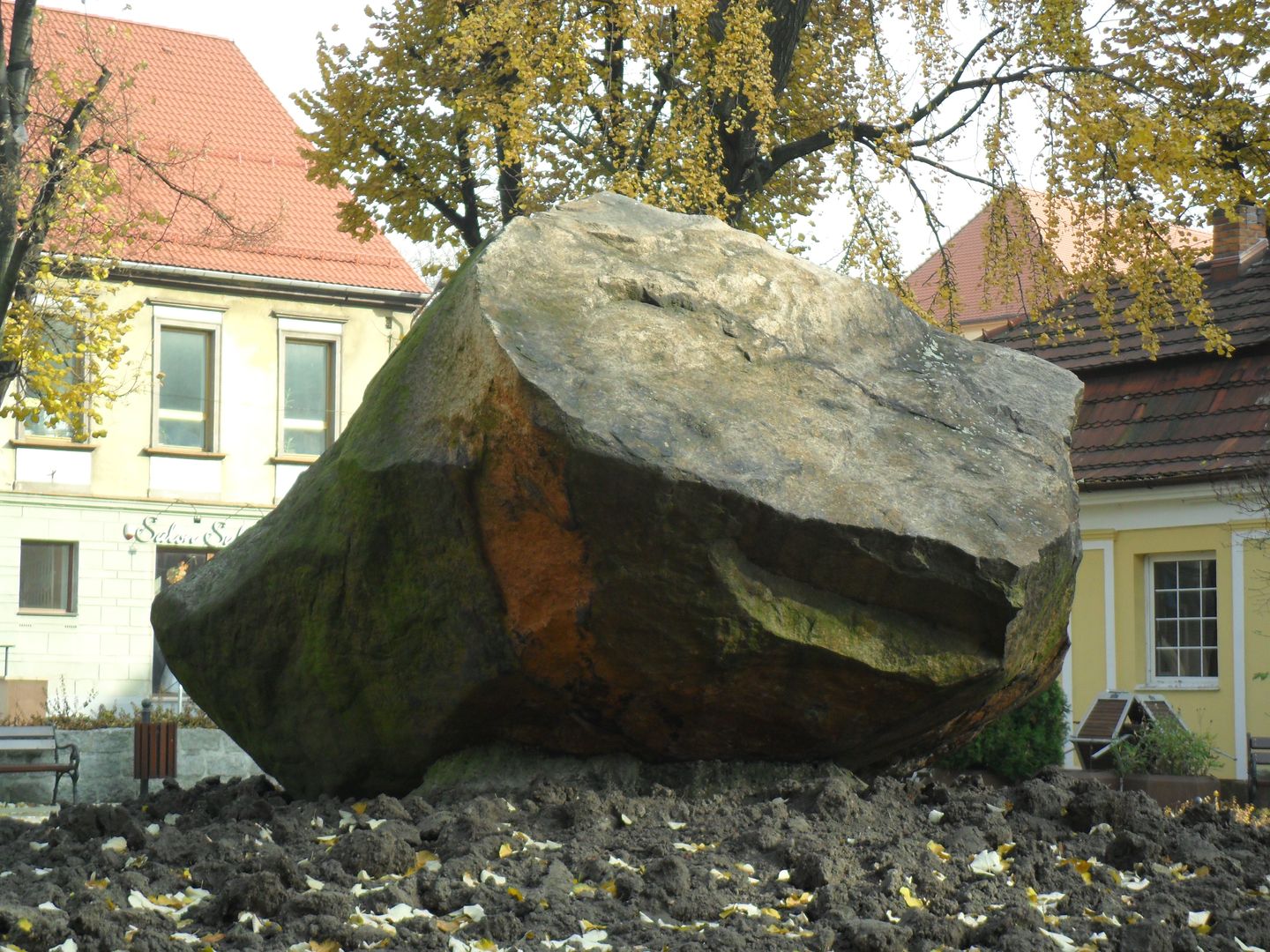Erratic boulder in Wolności Square in Racibórz
6.85

Overview
The erratic boulder in Wolności Square in Racibórz is an exceptionally important natural monument, originating from the Ice Age and composed of granite with admixtures of red feldspar and quartz. Given its impressive dimensions—weighing 42.5 tons and with a volume of 16.5 m³—it is the largest monumental boulder in Silesia. Its historical journey began in Scandinavia, from where it was transported to the Racibórz Basin by a glacier during the San II glaciation. Discovered in 1927, the boulder was fully uncovered in 1929, and in 1934, thanks to the efforts of local residents, it was moved to Adolf Polko Square in Racibórz. The relocation operation was a major undertaking, requiring a specially prepared chassis and two steam traction engines for transport. The inauguration ceremony took place on July 1, 1934, and the boulder was intended to symbolize a new era in German history as part of National Socialist ideology. Until 1945, it was surrounded by a wall with plaques commemorating NSDAP fighters. After the war, the wall was dismantled. In 1960, the boulder was designated as a monument of inanimate nature, highlighting its both natural and cultural significance. Today, as an interesting point on the tourist map, the granite boulder is featured on hiking trails, making it a popular attraction for visitors to Racibórz.
Location
2025 Wizytor | All Rights Reserved